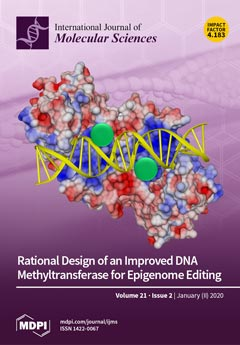The genus
Macrostomum represents a diverse group of rhabditophoran flatworms with >200 species occurring around the world. Earlier we uncovered karyotype instability linked to hidden polyploidy in both
M. lignano (2
n = 8) and its sibling species
M. janickei (2
n =
[...] Read more.
The genus
Macrostomum represents a diverse group of rhabditophoran flatworms with >200 species occurring around the world. Earlier we uncovered karyotype instability linked to hidden polyploidy in both
M. lignano (2
n = 8) and its sibling species
M. janickei (2
n = 10), prompting interest in the karyotype organization of close relatives. In this study, we investigated chromosome organization in two recently described and closely related
Macrostomum species,
M. mirumnovem and
M. cliftonensis, and explored karyotype instability in laboratory lines and cultures of
M. lignano (DV1/10, 2
n = 10) and
M. janickei in more detail. We revealed that three of the four studied species are characterized by karyotype instability, while
M. cliftonensis showed a stable 2
n = 6 karyotype. Next, we performed comparative cytogenetics of these species using fluorescent in situ hybridization (FISH) with a set of DNA probes (including microdissected DNA probes generated from
M. lignano chromosomes, rDNA, and telomeric DNA). To explore the chromosome organization of the unusual 2
n = 9 karyotype discovered in
M. mirumnovem, we then generated chromosome-specific DNA probes for all chromosomes of this species. Similar to
M. lignano and
M. janickei, our findings suggest that
M. mirumnovem arose via whole genome duplication (WGD) followed by considerable chromosome reshuffling. We discuss possible evolutionary scenarios for the emergence and reorganization of the karyotypes of these
Macrostomum species and consider their suitability as promising animal models for studying the mechanisms and regularities of karyotype and genome evolution after a recent WGD.
Full article






